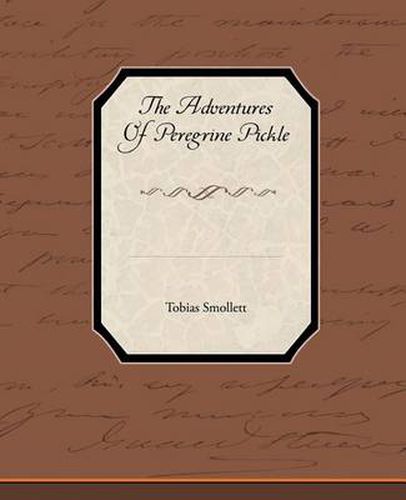Readings Newsletter
Become a Readings Member to make your shopping experience even easier.
Sign in or sign up for free!
You’re not far away from qualifying for FREE standard shipping within Australia
You’ve qualified for FREE standard shipping within Australia
The cart is loading…






This title is printed to order. This book may have been self-published. If so, we cannot guarantee the quality of the content. In the main most books will have gone through the editing process however some may not. We therefore suggest that you be aware of this before ordering this book. If in doubt check either the author or publisher’s details as we are unable to accept any returns unless they are faulty. Please contact us if you have any questions.
This picaresque tale, first published in 1751, was Tobias Smollett’s second novel. Following the fortunes and misfortunes of the egotistical dandy Peregrine Pickle, the novel is written as a series of brief adventures with every chapter typically describing a new escapade. The novel begins with Peregrine as a young country gentleman. His mother rejects him, as do his aloof father and his dissolute, spiteful brother. Commodore Hawser Trunnion takes Peregrine under his care and raises him. Peregrine’s upbringing, education at Oxford and journey to France, his debauchery, bankruptcy, jailing and succession to his father’s fortune and his final repentance and marriage to his beloved Emilia all provide scope for Smollett’s comic and caustic perspective on the Europe of his times. As John P. Zomchick and George S. Rousseau note in the introduction, by contrasting the genteel and the common, the sophisticated and the primal, Smollett conveys forcefully the way it felt to be alive in the middle of the eighteenth century. The introduction provides an overview of the composition and publication history of Peregrine Pickle and discusses the novel’s critical reception over time by such figures as Lady Luxborough, Sir Walter Scott, Joseph Conrad and George Orwell.
The text of the novel uses the first edition of 1751 as copy-text while recording the second edition’s substantive variants. Included are illustrations by Thomas Rowlandson, Richard Corbould and George Cruikshank, as well as frontispieces designed by, and engraved in the style of, Henry Fuseli. A complete textual apparatus concludes the volume.
$9.00 standard shipping within Australia
FREE standard shipping within Australia for orders over $100.00
Express & International shipping calculated at checkout
This title is printed to order. This book may have been self-published. If so, we cannot guarantee the quality of the content. In the main most books will have gone through the editing process however some may not. We therefore suggest that you be aware of this before ordering this book. If in doubt check either the author or publisher’s details as we are unable to accept any returns unless they are faulty. Please contact us if you have any questions.
This picaresque tale, first published in 1751, was Tobias Smollett’s second novel. Following the fortunes and misfortunes of the egotistical dandy Peregrine Pickle, the novel is written as a series of brief adventures with every chapter typically describing a new escapade. The novel begins with Peregrine as a young country gentleman. His mother rejects him, as do his aloof father and his dissolute, spiteful brother. Commodore Hawser Trunnion takes Peregrine under his care and raises him. Peregrine’s upbringing, education at Oxford and journey to France, his debauchery, bankruptcy, jailing and succession to his father’s fortune and his final repentance and marriage to his beloved Emilia all provide scope for Smollett’s comic and caustic perspective on the Europe of his times. As John P. Zomchick and George S. Rousseau note in the introduction, by contrasting the genteel and the common, the sophisticated and the primal, Smollett conveys forcefully the way it felt to be alive in the middle of the eighteenth century. The introduction provides an overview of the composition and publication history of Peregrine Pickle and discusses the novel’s critical reception over time by such figures as Lady Luxborough, Sir Walter Scott, Joseph Conrad and George Orwell.
The text of the novel uses the first edition of 1751 as copy-text while recording the second edition’s substantive variants. Included are illustrations by Thomas Rowlandson, Richard Corbould and George Cruikshank, as well as frontispieces designed by, and engraved in the style of, Henry Fuseli. A complete textual apparatus concludes the volume.